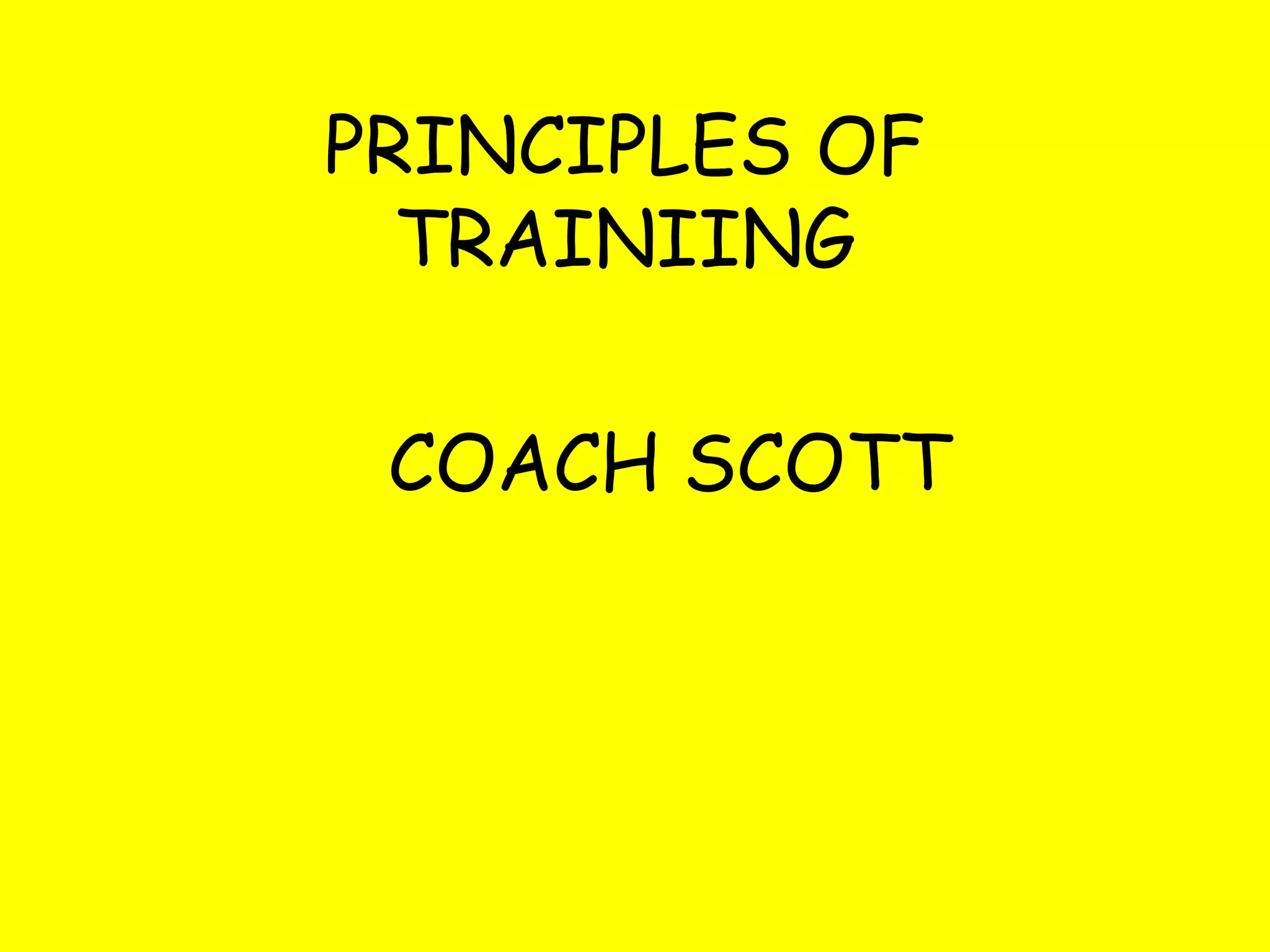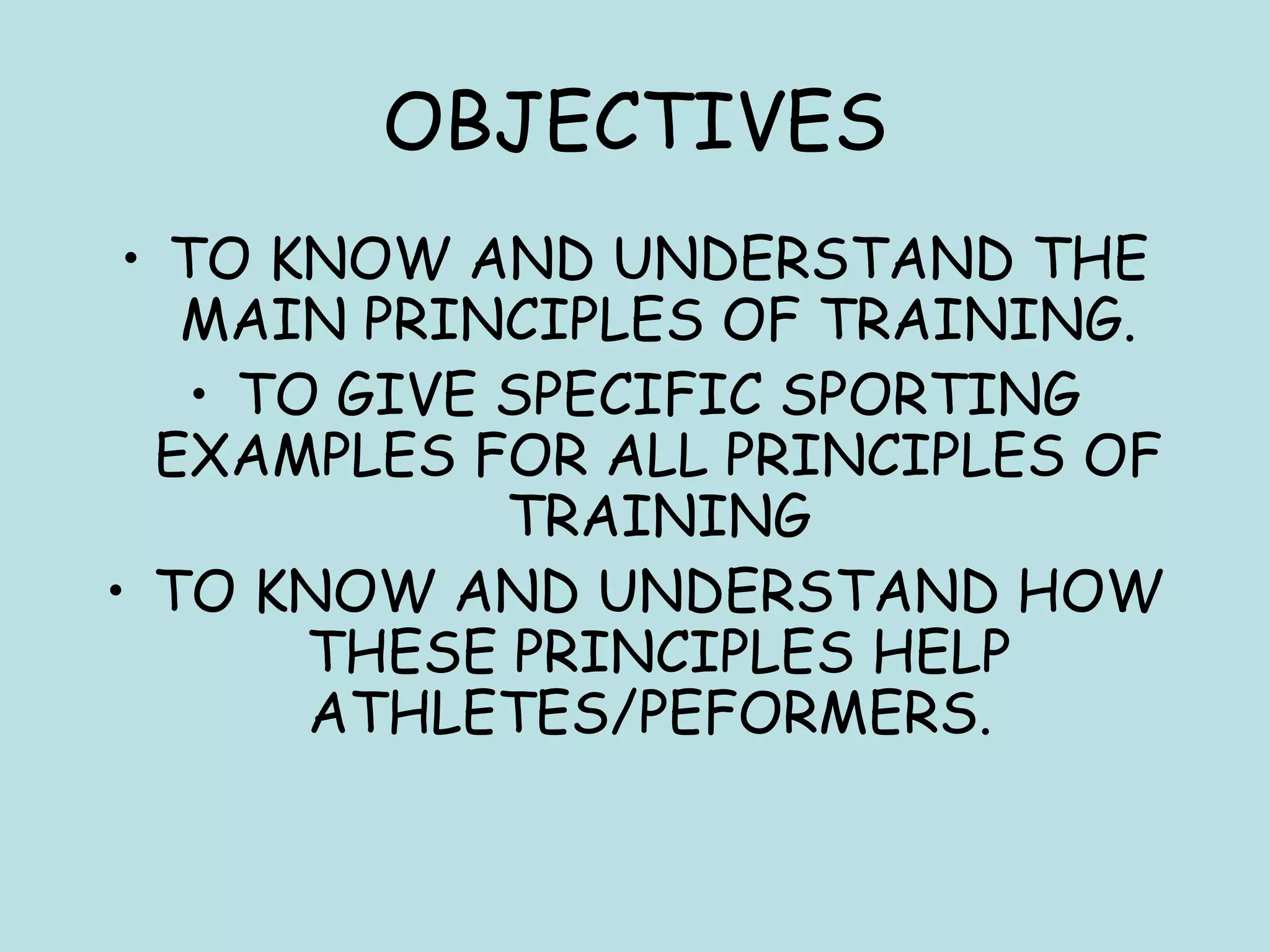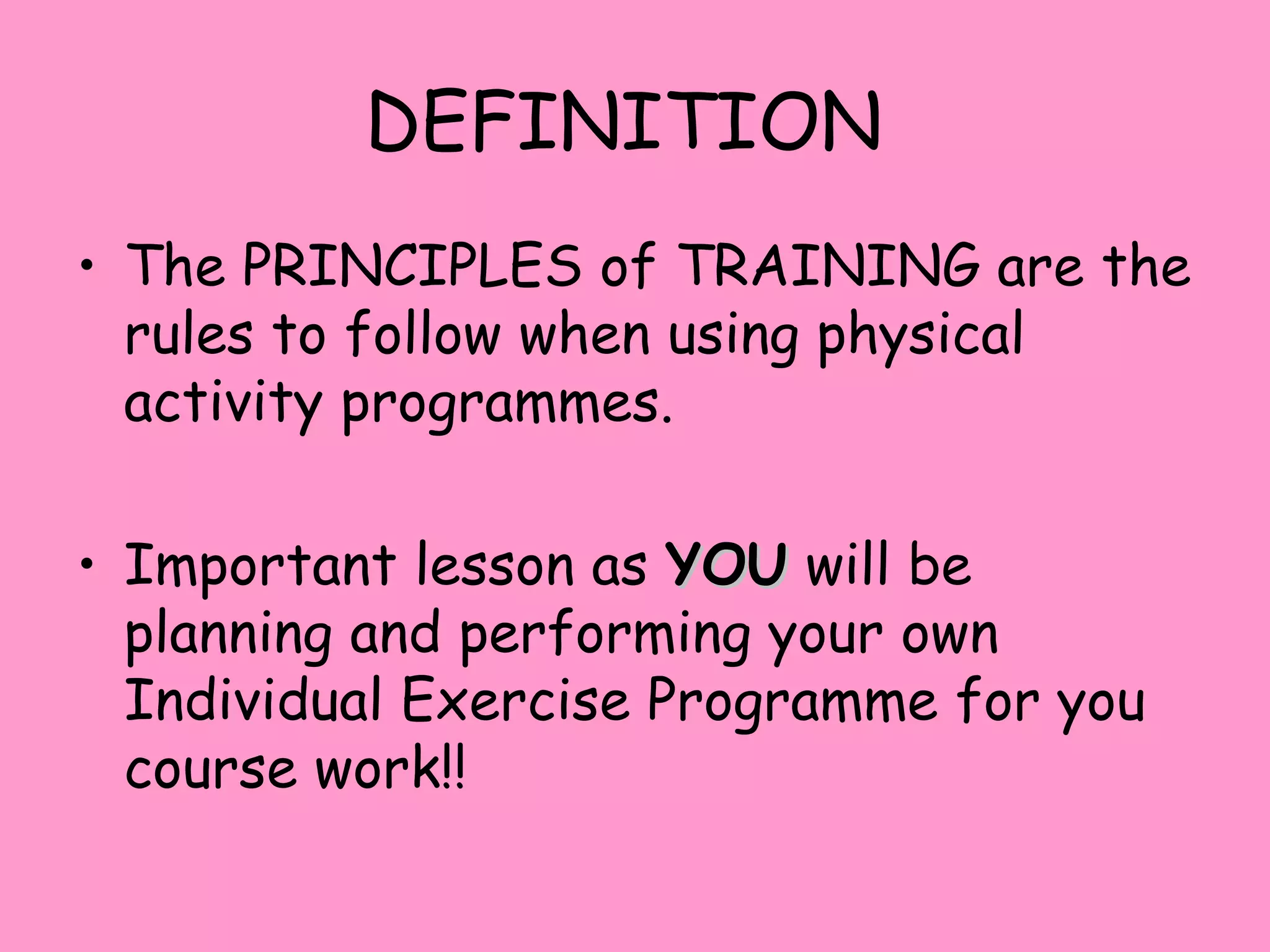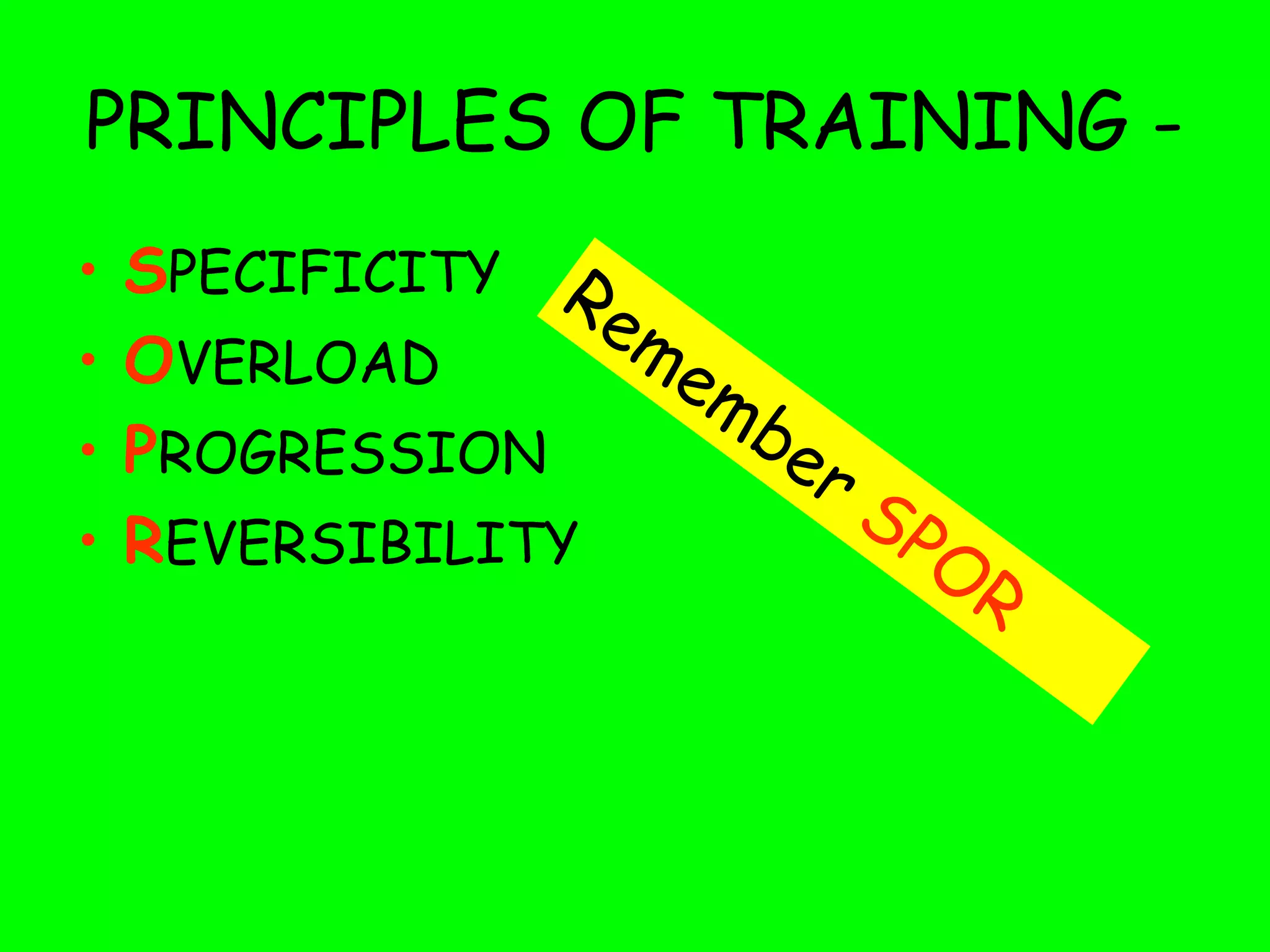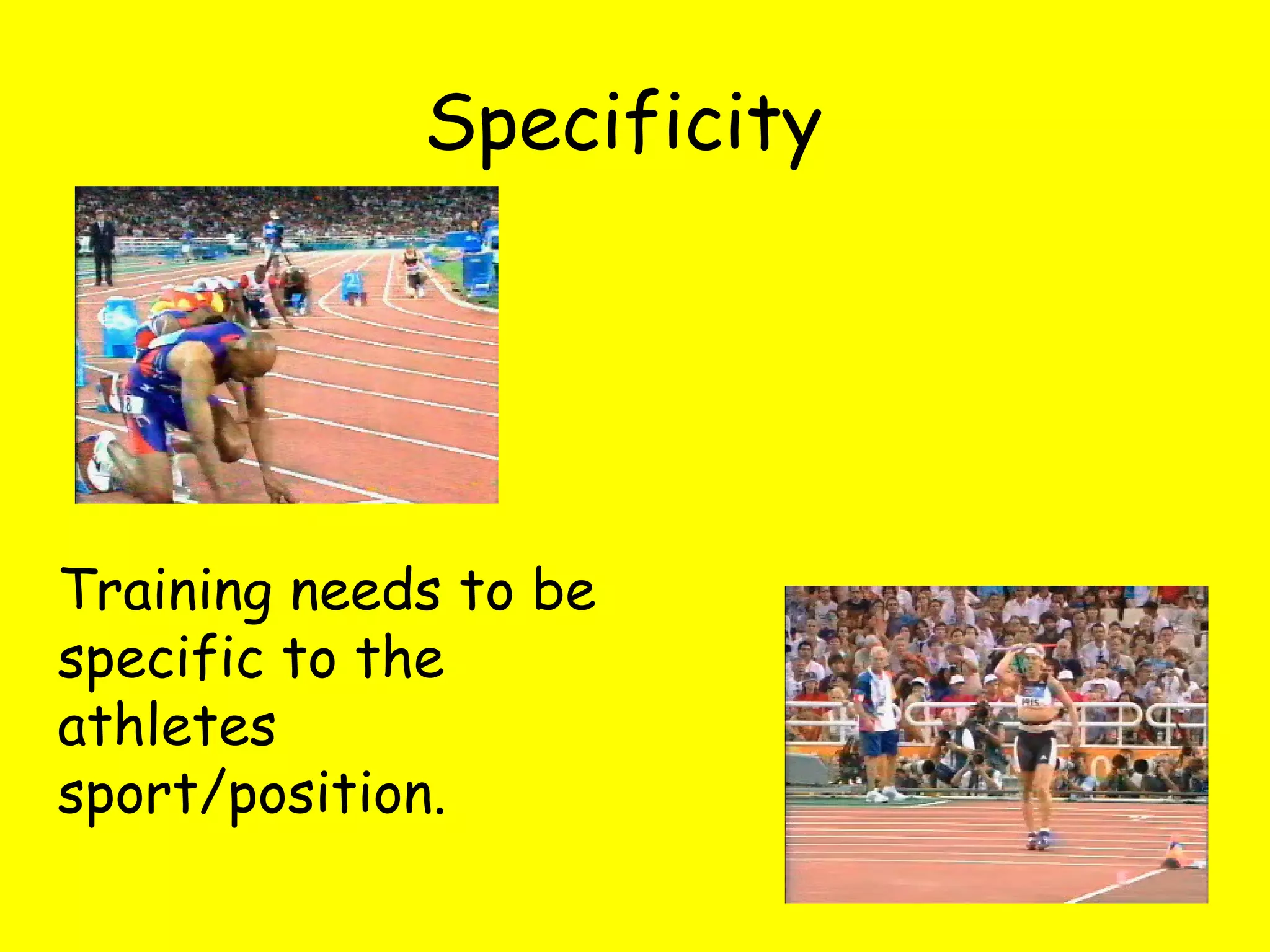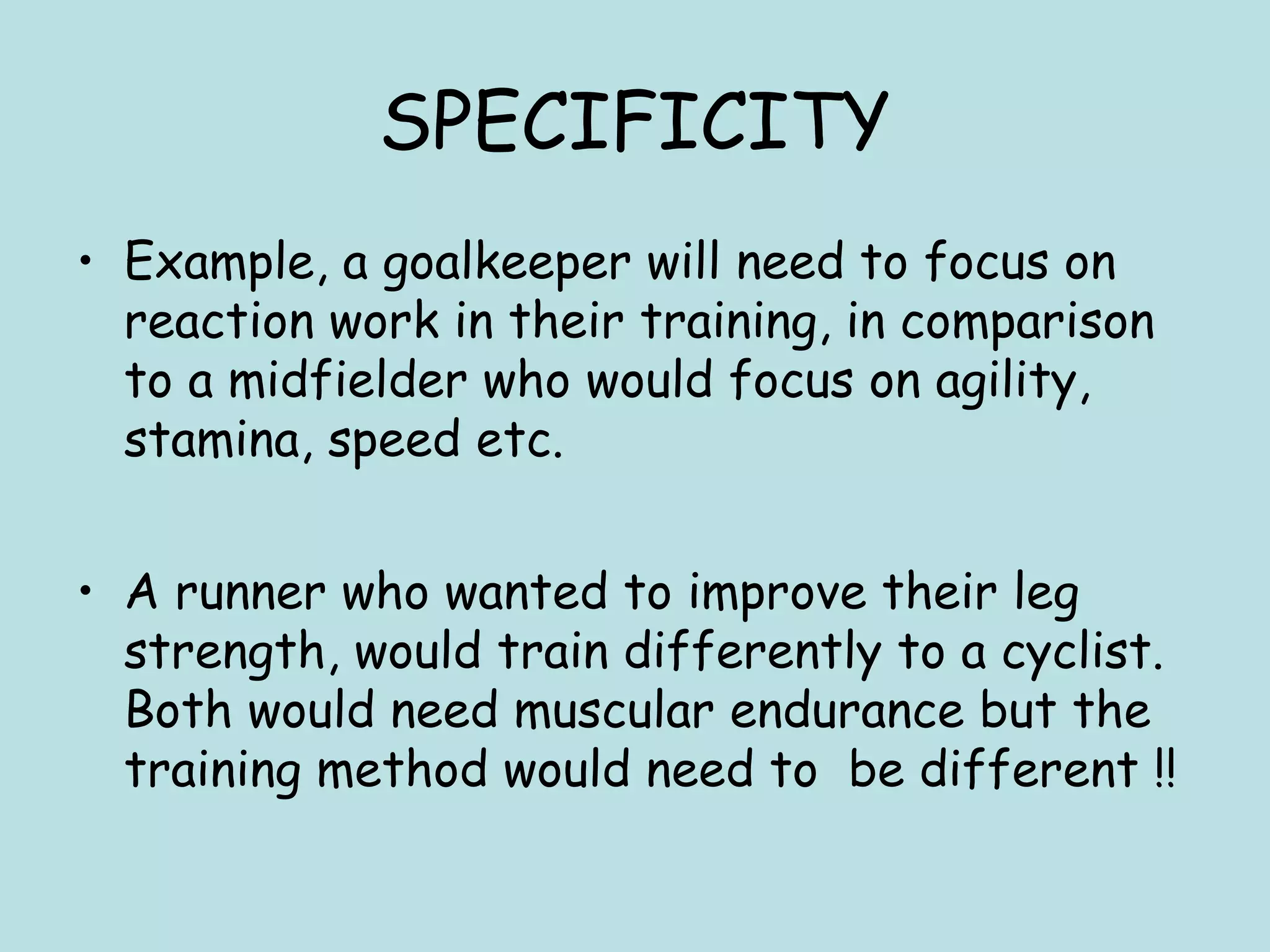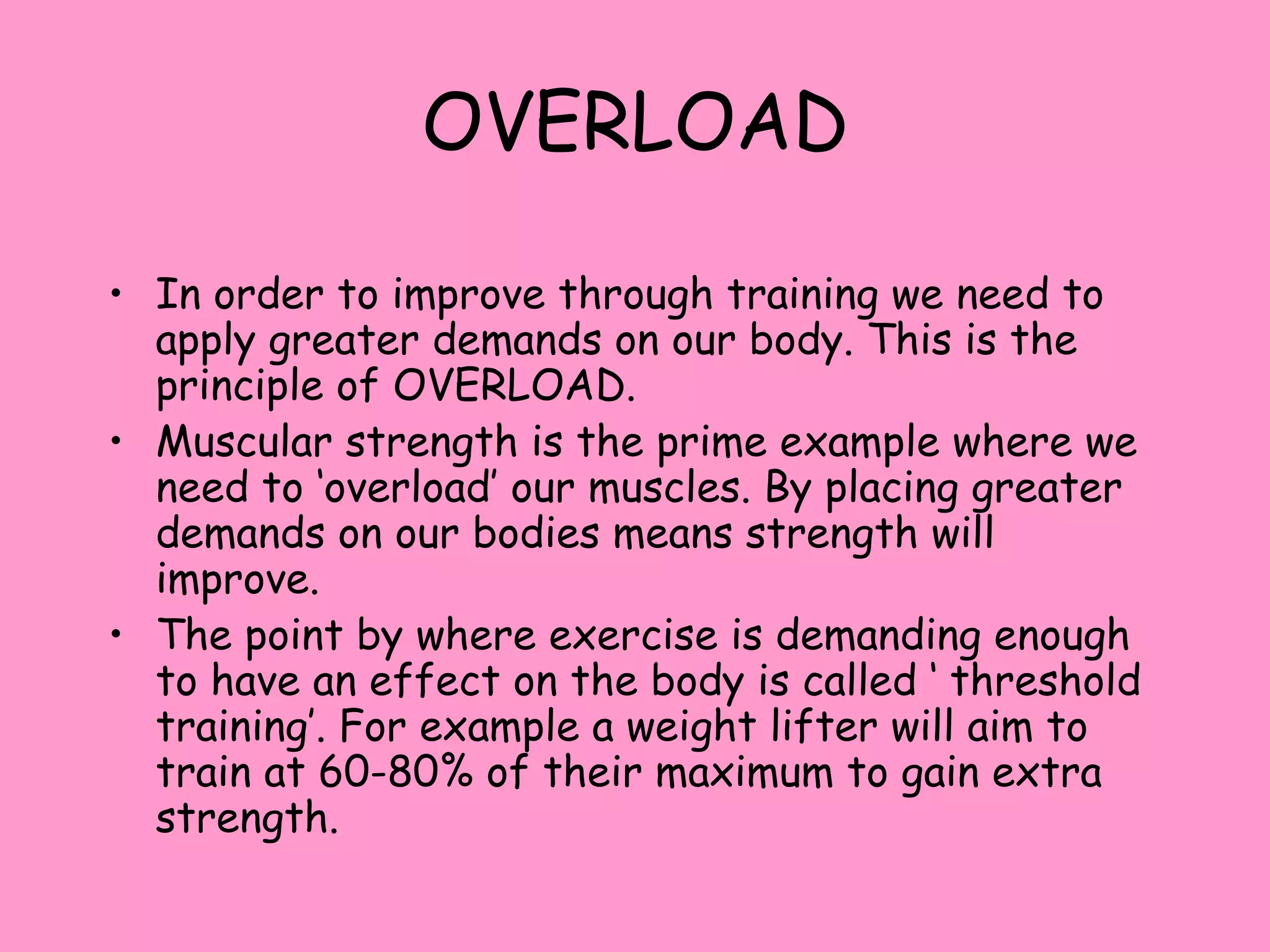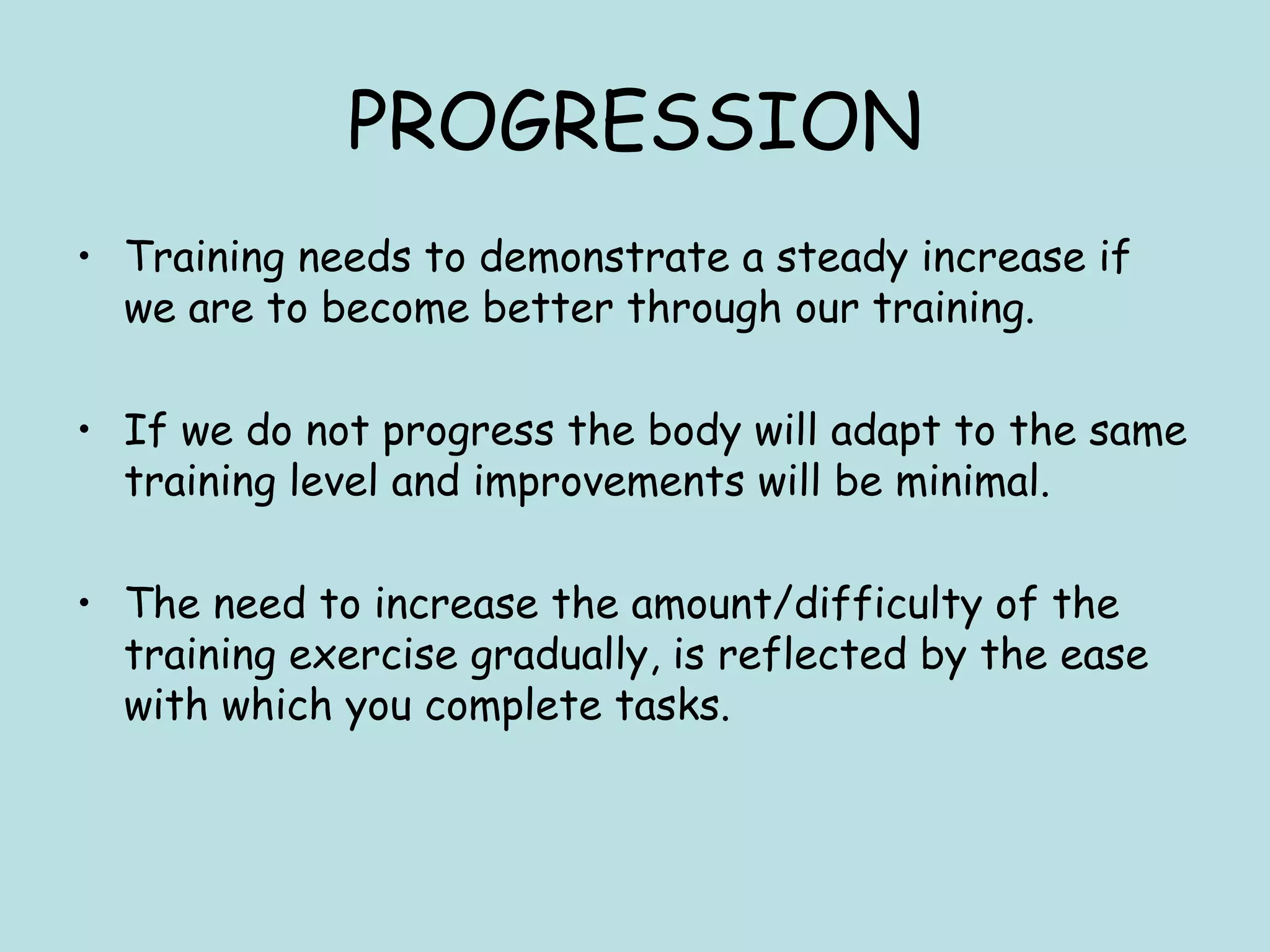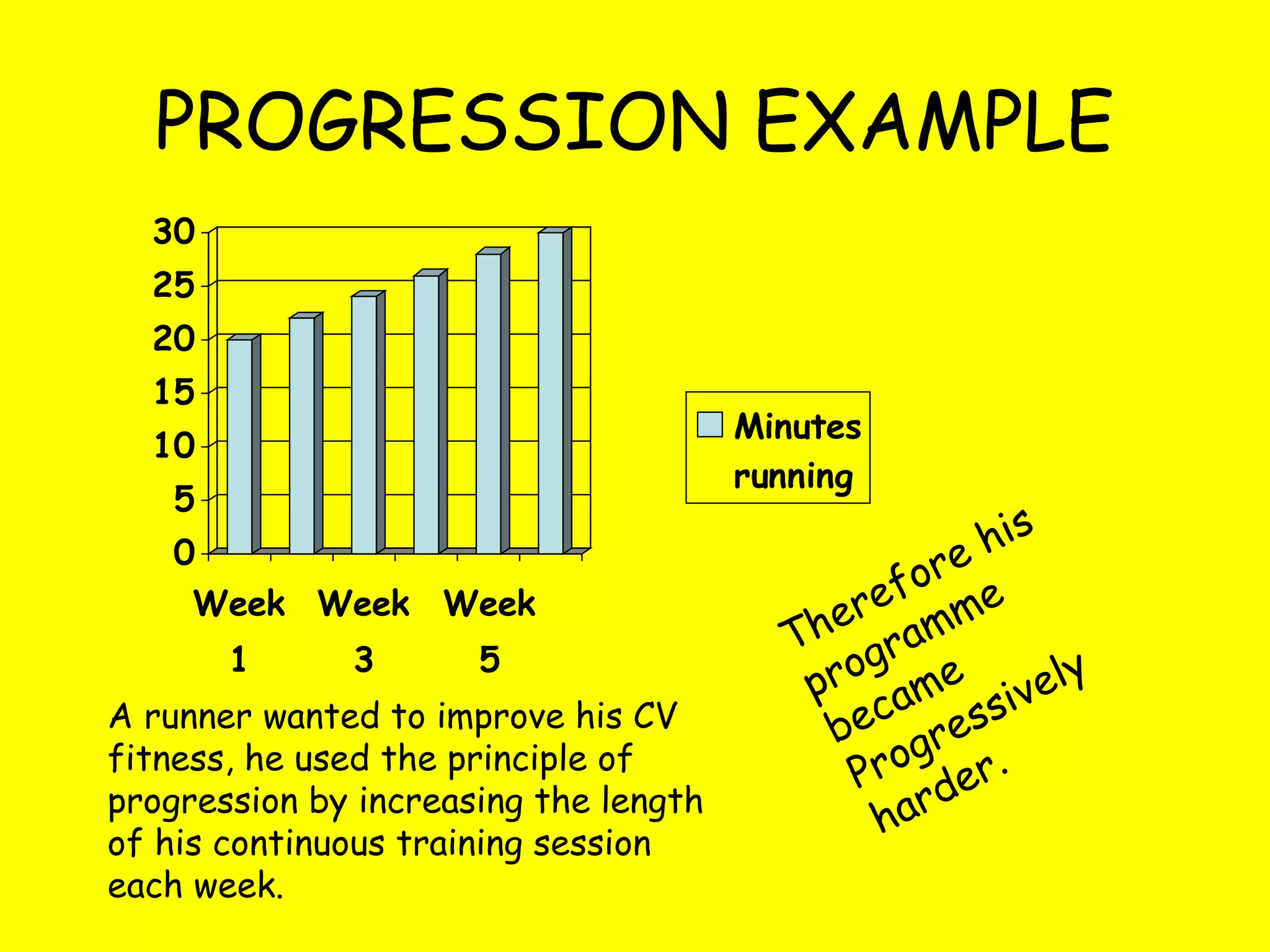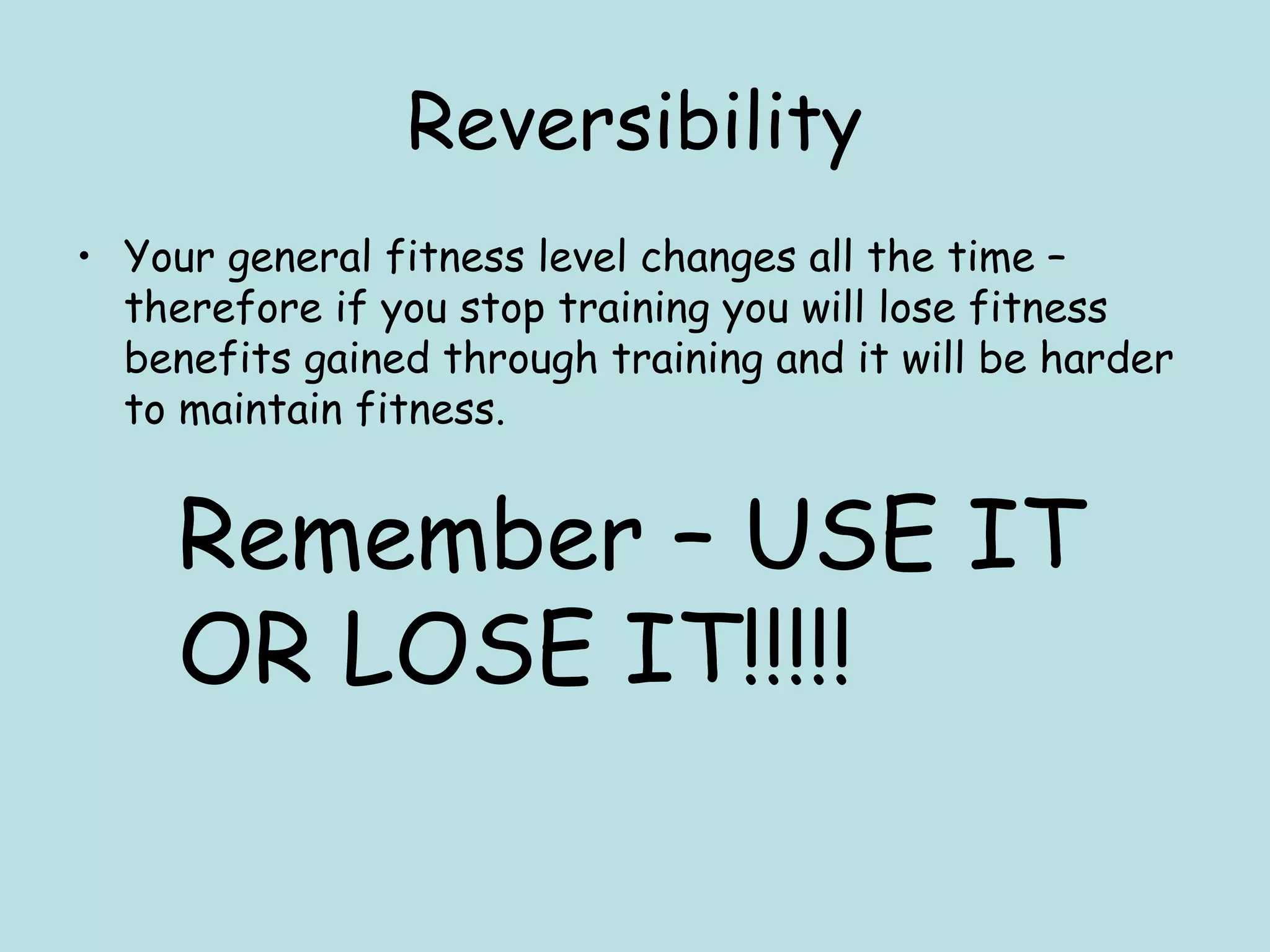This document outlines the main principles of training: specificity, overload, progression, and reversibility (SPOR). Specificity means training must match the demands of the sport. Overload means applying greater demands on the body to drive improvement. Progression requires gradually increasing the difficulty of training over time. Reversibility indicates fitness will decline if training is stopped. Examples are provided for each principle to illustrate how athletes can apply them.
